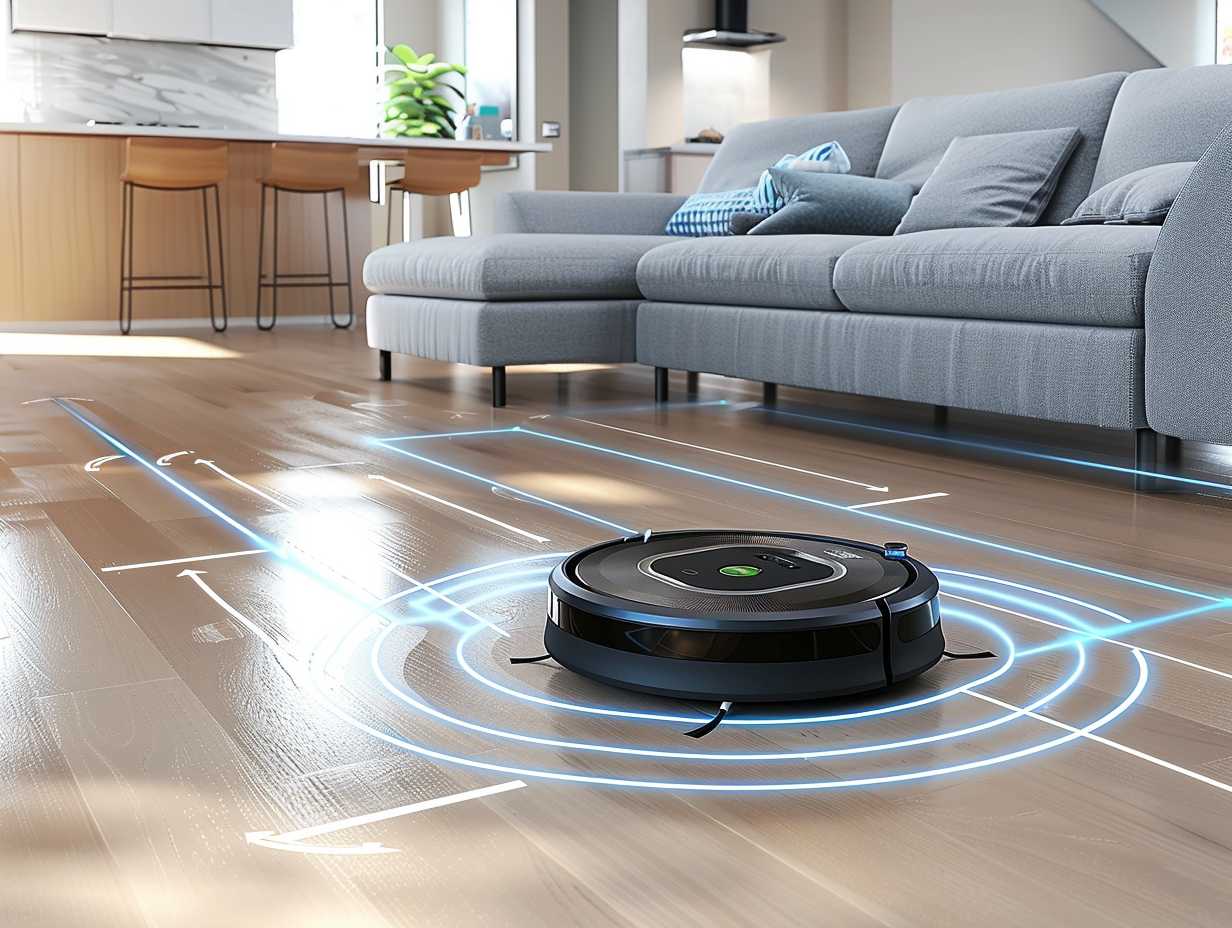
Robot Vacuums Barrier Compatibility

Exploring through the maze of modern technology, you may come across the fascinating domain of robot vacuums and their compatibility with barriers.
Have you ever pondered how these robotic helpers interact with obstacles in your home?
The advancement of barrier technologies and their influence on vacuum movement is a subject worth exploring for a flawless cleaning experience.
Stay tuned to unravel the secrets behind achieving peak performance with your robotic vacuum and how to overcome potential compatibility issues.
Key Takeaways
- Barrier compatibility is crucial for efficient vacuum navigation and protection.
- Various barrier technologies like virtual walls or physical barriers help establish boundaries.
- Factors like furniture placement and lighting affect vacuum navigation.
- To optimize cleaning efficiency, choose a vacuum model tailored to your home’s needs.
Importance of Barrier Compatibility

Understanding why barrier compatibility is vital can help you make an informed decision when selecting a robot vacuum. Barrier compatibility guarantees that your robot vacuum can efficiently navigate your home without getting stuck or causing damage.
By utilizing barriers such as virtual walls or magnetic strips, you can establish no-go zones for your robot vacuum, preventing it from entering certain areas. This feature is especially beneficial for safeguarding delicate items, preventing the vacuum from getting tangled in cords, or keeping it away from pet food bowls.
Verifying that your robot vacuum is compatible with the barrier technology you intend to use will improve its efficiency and save you time in the long run.
Types of Barrier Technologies
To effectively create boundaries for your robot vacuum, familiarize yourself with the various types of barrier technologies available on the market.
One common type is virtual walls, which emit an infrared beam to block off certain areas.
Magnetic strips are another option, where you lay down strips that create a magnetic field to keep the vacuum within specific zones.
Some newer models use smart barriers that connect to your smartphone, allowing you to set up virtual boundaries remotely.
There are also physical barriers like gates or doors that can be closed to restrict access.
Understanding these different barrier technologies will help you choose the most suitable option to optimize your robot vacuum’s cleaning efficiency.
Factors Affecting Vacuum Navigation

When your robot vacuum encounters obstacles, its navigation can be influenced by factors such as furniture placement and lighting conditions.
Cluttered spaces with furniture placed close together can impede the vacuum’s movement, causing it to struggle to navigate efficiently.
Additionally, poor lighting conditions can affect the vacuum’s ability to detect obstacles accurately, leading to potential navigation errors.
Reflective surfaces like mirrors or glass can confuse the vacuum’s sensors, causing it to misinterpret its surroundings.
Tips for Enhancing Compatibility
Maximize your robot vacuum’s performance by implementing simple adjustments to enhance its compatibility with your home environment.
Start by clearing clutter and removing small objects from the floor to prevent your robot vacuum from getting stuck or causing damage.
Secure loose cables and wires to avoid tangling incidents during cleaning sessions.
Consider using virtual barriers or physical barriers like magnetic strips to block off areas where you don’t want the robot vacuum to go.
Guarantee adequate lighting in all rooms to help the vacuum’s sensors navigate effectively.
Regularly clean the robot vacuum’s sensors and brushes to maintain peak performance.
Choosing the Right Model

Consider your home environment and cleaning needs when selecting the right model of robot vacuum for best performance.
If you have a large house with multiple rooms and different floor types, opt for a model with advanced mapping technology and efficient battery life to cover the entire space.
For homes with pets, choose a robot vacuum with strong suction power and specialized brushes to pick up pet hair effectively.
Additionally, if you have many obstacles or furniture in the house, look for a model equipped with anti-collision sensors and virtual barriers to navigate around obstacles seamlessly.
Frequently Asked Questions
Can Robot Vacuums Be Programmed to Avoid Specific Areas Within a Barrier Zone?
When programming robot vacuums, you can set specific areas within a barrier zone to avoid. This feature helps customize cleaning preferences and guarantees that the vacuum navigates around designated spots effectively, providing tailored cleaning solutions.
Are There Any Special Considerations for Using Barrier Technology in Multi-Level Homes?
When dealing with multi-level homes, it’s important to understand the unique challenges that come with barrier technology. Ensuring seamless operation across floors will require careful planning and adjustments to optimize performance.
How Do Different Types of Flooring Affect a Robot Vacuum’s Ability to Navigate Barriers?
Different types of flooring can impact your robot vacuum’s ability to navigate barriers. Carpets may hinder sensors, while hard floors allow smoother movement. Guarantee your robot vacuum is compatible with various flooring types for peak performance.
Can Barrier Technology Interfere With Other Smart Home Devices or Systems?
When setting up barrier technology in your home, validate compatibility with other smart devices. Some systems may interfere with each other if not adequately configured. Check for potential conflicts to avoid any disruptions in functionality.
Are There Any Potential Safety Risks Associated With Using Barrier Technology With Robot Vacuums?
When you combine technology without proper research, it’s like mixing ingredients for a recipe blindfolded. Potential safety risks with barrier technology and robot vacuums could arise if not compatible. Always guarantee devices work harmoniously.
Conclusion
To summarize, when it comes to robot vacuums, barrier compatibility is key.
By understanding the types of barrier technologies and factors affecting navigation, you can enhance your vacuum’s performance.
Remember to choose a model that suits your needs and home layout.
With the right knowledge and a little effort, you can make cleaning your home a breeze with a robot vacuum that effortlessly glides through obstacles.
More information about
Affiliate information declaration: We may earn revenue from the products referred on this page and participate in affiliate programs.


